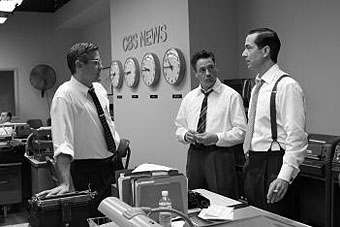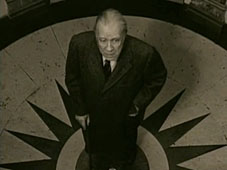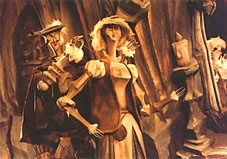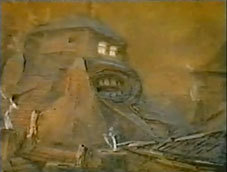
Only just caught this and it’s an excellent piece of work from Clooney and co. (his second time as director). Impossible not to see parallels between Ed Murrow’s determination to expose the excesses of McCarthyism with the current battles between the press in America and the belligerent rabble currently occupying the White House. Senator Joe McCarthy famously developed a pattern of accusing all his critics of being Communists or fellow travellers with the Communist cause. Likewise today we have the Bush administration accusing their critics of being traitors and terrorist sympathisers. Swap the word Communist for terrorist and the arguments remain identical. Last week the New York Times was accused of treason for publishing a report into secret service investigations into international banking activity, not the first time America’s newspaper of record has suffered accusations of treachery. As the NYT said in response:
Government officials, understandably, want it both ways. They want us to protect their secrets, and they want us to trumpet their successes. A few days ago, Treasury Secretary John Snow said he was scandalized by our decision to report on the bank-monitoring program. But in September 2003 the same Secretary Snow invited a group of reporters from our papers, The Wall Street Journal and others to travel with him and his aides on a military aircraft for a six-day tour to show off the department’s efforts to track terrorist financing. The secretary’s team discussed many sensitive details of their monitoring efforts, hoping they would appear in print and demonstrate the administration’s relentlessness against the terrorist threat.
Meanwhile Republicans continue to howl for the editor’s head. Why does America seem to slip into this kind of rigid authoritarianism so easily? This is one question not answered in Clooney’s film, perhaps understandably; it’s not an easy one to answer. Ed Murrow reported from London during the height of the Blitz and, at the end of the Second World War, from Buchenwald; he didn’t need lectures about patriotism or the evils that men are capable of. His articulacy compared with the showroom dummies that comprise today’s TV presenters is astonishing. His words are as relevant now as they were in the 1950s:
“If we confuse dissent with disloyalty – if we deny the right of the individual to be wrong, unpopular, eccentric or unorthodox – if we deny the essence of racial equality, then hundreds of millions in Asia and Africa who are shopping about for a new allegiance will conclude that we are concerned to defend a myth and our present privileged status. Every act that denies or limits the freedom of the individual in this country costs us the . . . confidence of men and women who aspire to that freedom and independence of which we speak and for which our ancestors fought.”
“We cannot defend freedom abroad by deserting it at home.”
Postscript: There’s a good analysis of the NYT debacle and why it’s such a serious issue here.






